Related Research Articles

Infantry is a military specialization which engages in ground combat on foot. Infantry generally consists of light infantry, mountain infantry, motorized & mechanized infantry, airborne infantry, and naval infantry or marines. Although disused in modern times, heavy infantry also commonly made up the bulk of many historic armies. Infantry, cavalry, and artillery have traditionally made up the core of the combat arms professions of various armies, with the infantry almost always comprising the largest portion of these forces.

The Royal Armoured Corps is the component of the British Army, that together with the Household Cavalry provides its armour capability, with vehicles such as the Challenger 2 Tank and the Scimitar Reconnaissance Vehicle. It includes most of the Army's armoured regiments, both the Royal Tank Regiment and those converted from old horse cavalry regiments. Today it comprises twelve regiments, eight regular and four reserve. Although the Household Cavalry Regiment provide an armoured regiment, they are not part of the RAC.
A division is a large military unit or formation, usually consisting of between 6,000 and 25,000 soldiers.

A regiment is a military unit. Its role and size varies markedly, depending on the country, service and/or a specialisation.

A brigade is a major tactical military formation that typically comprises three to six battalions plus supporting elements. It is roughly equivalent to an enlarged or reinforced regiment. Two or more brigades may constitute a division.
Corps is a term used for several different kinds of organization. A military innovation by Napoleon I, the formation was first named as such in 1805. The size of a corps varies greatly, but from two to five divisions and anywhere from 40,000 to 80,000 are the numbers stated by the US Department of Defense.

The First Australian Imperial Force was the main expeditionary force of the Australian Army during the First World War. It was formed as the Australian Imperial Force (AIF) following Britain's declaration of war on Germany on 15 August 1914, with an initial strength of one infantry division and one light horse brigade. The infantry division subsequently fought at Gallipoli between April and December 1915, with a newly raised second division, as well as three light horse brigades, reinforcing the committed units.

The 3rd Division is a regular army division of the British Army. It was created in 1809 by Arthur Wellesley, 1st Duke of Wellington, as part of the Anglo-Portuguese Army, for service in the Peninsular War, and was known as the Fighting 3rd under Sir Thomas Picton during the Napoleonic Wars. The division fought at the Battle of Waterloo, as well as during the Crimean War and the Second Boer War. As a result of bitter fighting in 1916, during the First World War, the division became referred to as the 3rd (Iron) Division, or the Iron Division or Ironsides. During the Second World War, the division fought in the Battle of France including a rearguard action during the Dunkirk Evacuation, and played a prominent role in the D-Day landings of 6 June 1944. The division was to have been part of a proposed Commonwealth Corps, formed for a planned invasion of Japan in 1945–46, and later served in the British Mandate of Palestine. During the Second World War, the insignia became the "pattern of three" — a black triangle trisected by an inverted red triangle, created by Bernard Montgomery to instil pride in his troops.

The Australian and New Zealand Army Corps (ANZAC) was a First World War army corps of the Mediterranean Expeditionary Force. It was formed in Egypt in December 1914, and operated during the Gallipoli campaign. General William Birdwood commanded the corps, which primarily consisted of troops from the First Australian Imperial Force and 1st New Zealand Expeditionary Force, although there were also British and Indian units attached at times throughout the campaign. The corps disbanded in 1916, following the Allied evacuation of the Gallipoli peninsula and the formation of I ANZAC Corps and II ANZAC Corps. The corps was reestablished, briefly, in the Second World War during the Battle of Greece in 1941.
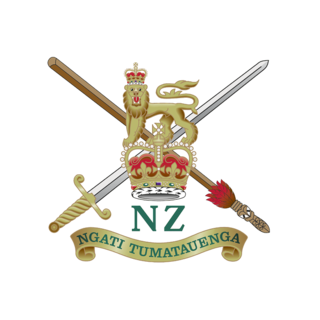
The New Zealand Army is the land component of the New Zealand Defence Force and comprises around 4,659 Regular Force personnel and 2,122 Reserve Force personnel. Formerly the New Zealand Military Forces, the current name was adopted by the New Zealand Army Act 1950. The New Zealand Army traces its history from settler militia raised in 1845.
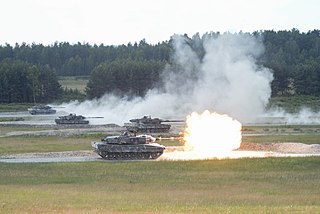
Armoured warfare or armored warfare, is the use of armored fighting vehicles in modern warfare. It is a major component of modern methods of war. The premise of armoured warfare rests on the ability of troops to penetrate conventional defensive lines through use of manoeuvre by armoured units.

The Royal Australian Armoured Corps (RAAC) is a corps of the Australian Army which provides the Australian Defence Force's armour capability. Armour combines firepower, mobility, protection and networked situational awareness to generate shock action and overmatch in close combat. Armour is an essential element of the combined arms approach that is employed by the Australian Army.
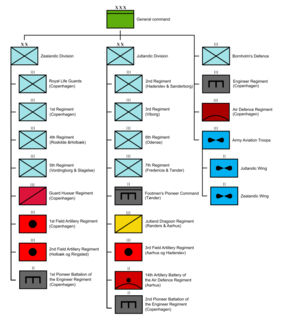
Military organization or military organisation is the structuring of the armed forces of a state so as to offer such military capability as a national defense policy may require. In some countries paramilitary forces are included in a nation's armed forces, though not considered military. Armed forces that are not a part of military or paramilitary organizations, such as insurgent forces, often mimic military organizations, or use ad hoc structures, while formal military organization tends to use hierarchical forms.
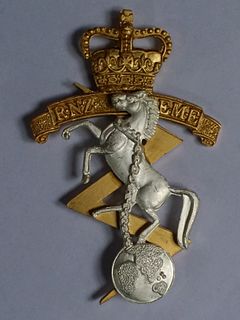
The Royal New Zealand Electrical and Mechanical Engineers (RNZEME) was a New Zealand Army Corps comprising Army trained tradesmen (craftsmen) who repaired Army equipment wherever New Zealand Forces served.
A formation patch or formation badge is a military insignia that identifies a soldier's military formations. Originally developed during the 20th century for battlefield identification, it has persisted into the 21st century as an element of military heraldry.
The 1st Brigade is currently the largest unit of the New Zealand Army, and contains most of the army's deployable units. The brigade was formed on 13 December 2011 by amalgamating the 2nd Land Force Group and 3rd Land Force Group. Its establishment formed part of the 'Army 2015' package of reforms.
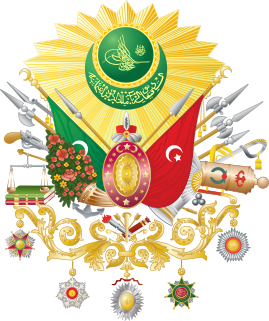
The Ottoman Army was the army of the Ottoman Empire after the country was reorganized along modern western European lines during the Tanzimat modernization period. It operated during the decline and dissolution of the empire, which roughly occurred between 1861 and 1918, the end of World War I for the Ottomans. The Crimean War was the first war effort in which the modern army took part, proving itself as a decent force. The last reorganization occurred during the Second Constitutional Era.
The 35th Armoured Brigade was an armoured brigade formation of the British Army, formed during the Second World War. The brigade was never deployed in combat, remaining in the UK to act as a home defence and training unit, and provided replacements for other formations.
A combat team is temporary grouping of military organizations of differing types to accomplish a defined mission or objective. Usage varies between commonwealth nations, where the term applies to a sub-unit level grouping, and the United States, where the term is found at unit and formation levels.
References
- ↑ Ewer, Peter (2008). Forgotten Anzacs: The Campaign in Greece, 1941, Scribe Publications Pty Ltd, ISBN 1921215291.
- ↑ Ewer, Peter (2008). Forgotten Anzacs: The Campaign in Greece, 1941, Scribe Publications Pty Ltd, ISBN 1921215291.
- ↑ Royal New Zealand Infantry Regiment History
- ↑ An authoritative source for New Zealand administrative corps from 1911-1991 is Malcolm Thomas and Cliff Lord, Parts One/Two "New Zealand Army Distinguishing Patches 1911-1991," ISBN 0-473-03288-0.
- ↑ An authoritative source for New Zealand administrative corps from 1911-1991 is Malcolm Thomas and Cliff Lord, Parts One/Two "New Zealand Army Distinguishing Patches 1911-1991," ISBN 0-473-03288-0.
- ↑ Africa and the Second World War, editors David Killingray, Richard Rathbone, Macmillan, 1986
- ↑ War and Empire in Mauritius and the Indian Ocean, A. Jackson, Palgrave Macmillan UK, 2001
- History of the Second World War (104 volumes), Her Majesty's Stationery Office, London 1949 to 1993
- Official History of Australia in the War of 1939–1945 (22 volumes), Australian Government Printing Service, 1952 to 1977
- Official History of the Canadian Army in the Second World War, Vol I Six Years of War, Stacey, C P., Queen's Printer, Ottawa, 1955
- The Canadian Army 1939 – 1945, An Official Historical Summary, Stacey, C P., Queen's Printer, Ottawa, 1948
- Official History of the Indian Armed Forces in the Second World War 1939-45 (24 volumes), Combined Inter-Services Historical Section, India & Pakistan, New Delhi, 1956-1966
- Official History of New Zealand in the Second World War 1939–45, Historical Publications Branch, Wellington, New Zealand, 1965
- Official Lineages DND, Ottawa